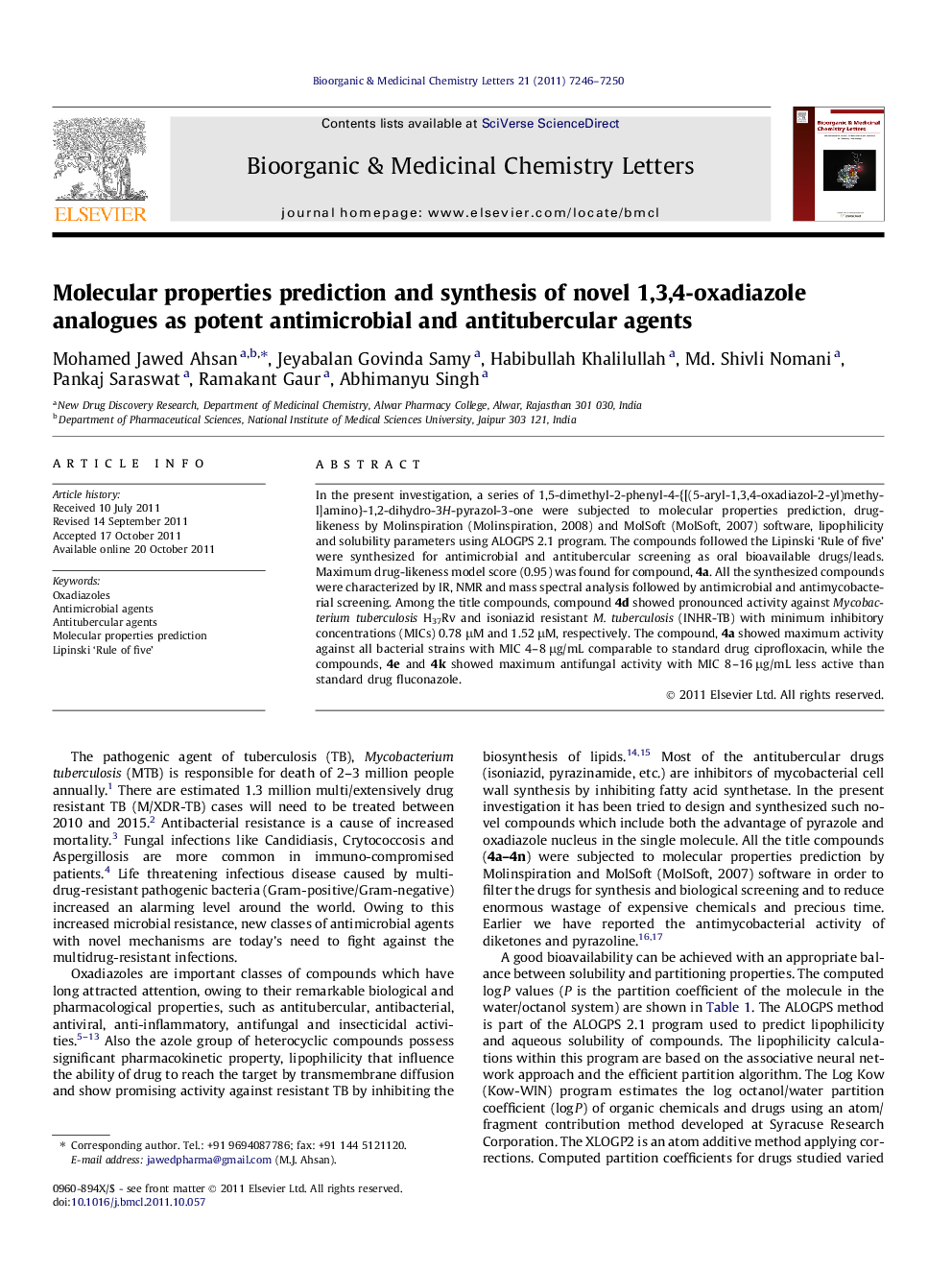| Article ID | Journal | Published Year | Pages | File Type |
|---|---|---|---|---|
| 1370125 | Bioorganic & Medicinal Chemistry Letters | 2011 | 5 Pages |
In the present investigation, a series of 1,5-dimethyl-2-phenyl-4-{[(5-aryl-1,3,4-oxadiazol-2-yl)methyl]amino}-1,2-dihydro-3H-pyrazol-3-one were subjected to molecular properties prediction, drug-likeness by Molinspiration (Molinspiration, 2008) and MolSoft (MolSoft, 2007) software, lipophilicity and solubility parameters using ALOGPS 2.1 program. The compounds followed the Lipinski ‘Rule of five’ were synthesized for antimicrobial and antitubercular screening as oral bioavailable drugs/leads. Maximum drug-likeness model score (0.95) was found for compound, 4a. All the synthesized compounds were characterized by IR, NMR and mass spectral analysis followed by antimicrobial and antimycobacterial screening. Among the title compounds, compound 4d showed pronounced activity against Mycobacterium tuberculosis H37Rv and isoniazid resistant M. tuberculosis (INHR-TB) with minimum inhibitory concentrations (MICs) 0.78 μM and 1.52 μM, respectively. The compound, 4a showed maximum activity against all bacterial strains with MIC 4–8 μg/mL comparable to standard drug ciprofloxacin, while the compounds, 4e and 4k showed maximum antifungal activity with MIC 8–16 μg/mL less active than standard drug fluconazole.
Graphical abstractA series of 1,5-dimethyl-2-phenyl-4-{[(5-aryl-1,3,4-oxadiazol-2-yl)methyl]amino}-1,2-dihydro-3H-pyrazol-3-one were synthesized after molecular properties prediction by Molinspiration and MolSoft software. Among 14 compounds synthesized, compound 4d was found to be active with MICs, 0.78 μM and 1.52 μM against MTB and INHR-TB, respectively. The compounds, 4a and 4k were found to be active against bacteria and fungi, respectively. The compound, 4a has maximum drug-likeness score model, 0.95.Figure optionsDownload full-size imageDownload as PowerPoint slide
